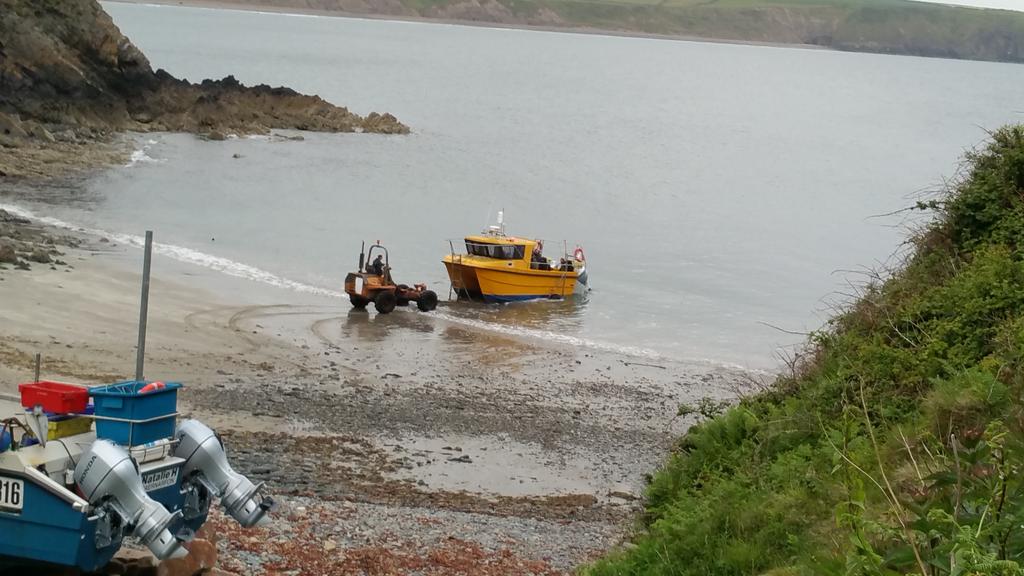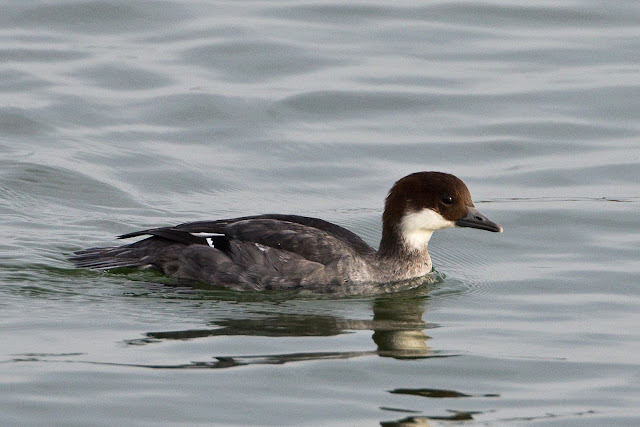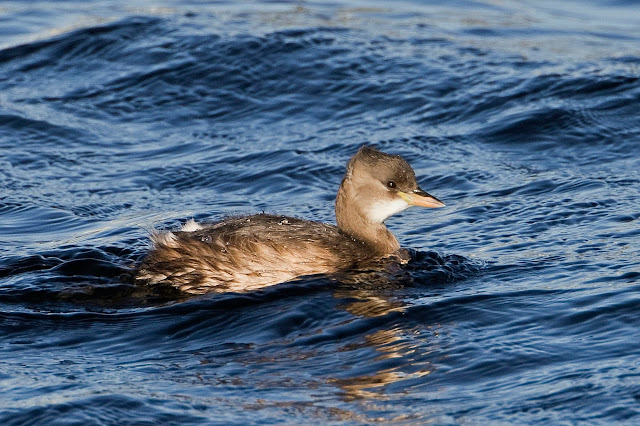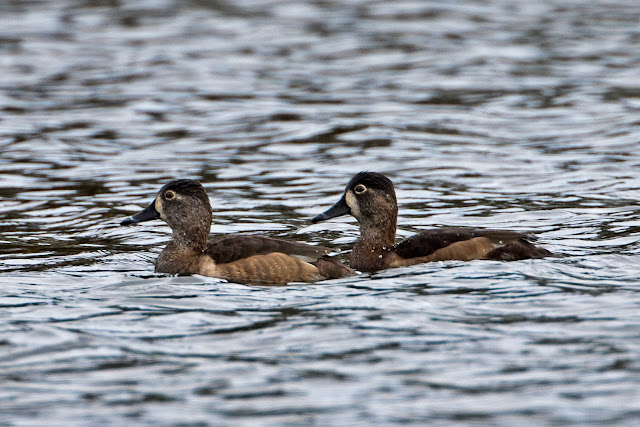I write this blog as a diary of my birding exploits but I
mostly write about my successes. I am not a great one for twitches but I do
keep a year list and a life list and I do like to see as many different birds
as possible. Success in birding, as in my searching for butterflies,
dragonflies and most other aspects of nature, is important to me. However,
failure is what makes the hobby so compelling. The search, the disappointments, and the overcoming of failures, it's what makes the success so much sweeter.
I didn’t go to Bardsey Island to see the Cretzschmar's
Bunting. For me, there were too many people and too much organisation, but if I
had gone I would almost like to have been on the boat below, as recorded by Jon
Holt on his 21st June tweet. Success would have just been another tick on the
list. This failure, "Boat full of Dippers", would live in your memory for ever. Great capture Jon. I
feel sorry for the people on the boat but this was one of my highlights of the
year.
 |
| Boat full of Dippers |
So I decided to spend more time recording my failures. It’s
proving to be quite painful. Most I had locked away in a part of my mind where
I didn’t need to look at them too often and, so it’s not too difficult for me, I am
only going to look at 2015.
Top of my list of dips must be the Lesser Spotted
Woodpecker. I can remember seeing them as a boy but since I started serious
birding three or four years ago I have failed to connect with one on a number
of attempts. Perhaps the best (or worst) occasion was back in February in the
New Forest. We had been to Mark Ash Wood a couple of times looking for the
Lesser Spot and on this occasion as with others there was plenty of drumming,
but the bird was difficult to locate. It was very
mobile but it did seem as though we could track it back to the individual trees
it was using. However, each time we found a tree and stood at the bottom
searching for movement we came up empty handed and the bird would suddenly
start up again fifty or sixty yards away.
After about an hour and a half of this we ended up back in the car park talking
to a couple of other birders. The drumming had stopped so I decided to wander
off and take a few photographs of a Tawny Owl that was resident close by. Bad
move, I was only a couple of minutes from the car park when I had a call from
Dave to say that the Lesser Spot had just flown over them. Mission drift, how
many times does it happen? I had come for the Lesser Spotted and that is all I
should have been looking for.
I raced back to the car park but it was gone. Dave had only gotten a few
seconds view but it was enough for all three of them to confirm the sighting.
We looked but the bird was nowhere to be seen. The drumming did not start up
again and, despite further visits, I still have a big hole where a Lesser Spotted Woodpecker should be
sitting.
The New Forest is also the location of what I see as a
regular dip on Goshawks. I had seen black dots yo-yoing in the distance and the
experts had assured me they were Goshawks. I had seen very brief flybys of
birds that could have been Goshawks but they could also have been Sparrowhawks.
I was just not sure. Fortunately this dip was killed off spectacularly when I
had an invite to go and watch Goshawk chicks being ringed click here and had good views of nine chick plus adult
male and female birds.
 |
| Goshawk chick |
On 3rd July a Squacco Heron was reported on the
Ouse at Southease. I had commitments that I couldn’t get out of until about six
thirty but with sunset at around nine twenty there was still plenty of time to
get there. A quick discussion with my birding buddy, Dave, and a check on the
Friday night traffic chaos and we decided to leave it until the next morning.
Stupid or what? The next morning at six thirty there were plenty of birders
there but no sign of the Squacco.
It was even more galling to see that Lee Evans, who
must have seen dozens of Squaccos, spent four hours travelling the 88 miles through the M25 Friday evening traffic to get there just before the bird went
to roost. Perhaps it explains why his life list is a little longer than mine!
 |
| Dave Barfield’s picture of the Squacco Heron that we dipped.- Posted on SOS |
I also dip butterflies although it’s very rare. This time it
was the Large Blue at Collard Hill on Monday 8th June. We were
really keen to get this butterfly so having seen the first report of the year
for the site we headed down there the next morning, a two hundred and fifty
mile six hour round trip and all for nothing. It was cold, windy, and there
were no butterflies flying. This time a little more patience and a few days
wait would have paid off. I did eventually get to see the butterfly late one
afternoon a week or so later but the record shot is hardly anything to write
home about.
 |
| Large Blue |
I see this one as unfinished business. I have my life tick
but I still don’t have the photograph.
I had similar problems with the even rarer Long-tailed Blue but fortunately this was only five miles from home. We searched for about three hours in the cold but with rain threatening we decided to give up and head for home. The butterfly, of course, turned up just a few minutes after we left. Fortunately a return visit the next morning gave us some good views.
 |
| Long-tailed Blue |
Then there was the little Bunting in Ashdown Forest. I had
seven days of dipping this bird made all the worse by the fact that on day one
Dave had taken a picture of it. It was in with a small flock of Reed Buntings
that we had both been watching. Neither of us spotted the bird at the time
but Dave recognised the picture when he got home. I must have looked at it but
not seen what it was. Seven days and over thirty hours of looking and I
finally gave up and drove down to Cardiff to see the one that was sitting outside
a hide at Forest Farm Reserve. Again not a brilliant picture and it did take me a while to get the identification confirmed but it did at
least bring this little episode to an end.
 |
| Little Bunting |
Pallid Harrier at the Burgh? We were over there on the
Wednesday and Thursday from early morning to mid-afternoon. On both days I had
to leave early and as you would expect it turned up after we left. On Friday we
went over mid-afternoon and stayed until it got dark and of course it showed
well in the morning. To make it worse on the Wednesday we walked round to the
dew pond and it showed from the triangle car park end. Thursday we stood at the
five bar gate by the car park and it showed at the dew pond end and Friday late
afternoon whilst we were back at the dew pond it showed briefly from the car
park end again.
There is nothing worse than walking back past birders that
have big smiles on their faces and are keen to tell you about the "stonking" views that they had. Fortunately I caught up with it on the Sunday, after a couple
of false alarms with Hen Harriers. It was always distant and although I had it
in sight for about an hour I could only get poor record shots. To be honest I
was just glad when it was all over. I will wait for the next bird to get a
decent picture.
Then there are all the birds that I missed. Not exactly dips
because I was not actively looking for them. They are just birds that I expect
to see each year and for some reason I have failed to connect with them this year –
Yellow-legged Gull, Water Pipit, Shorelark, Yellow-browed Warbler, Woodcock,
Ruddy Shelduck, Hoopoe, Chough, Grasshopper Warbler, and Ruddy Duck. And of
course the boggie birds. Lesser-spotted Woodpecker I have already mentioned but
Jack Snipe and Merlin are also birds that I just do not seem to be able to
catch up with.
 |
| The closest I have ever been to a Merlin - two we found dead in the road near Scotney Pits |
This was an interesting blog to produce. Cathartic I think is the word - it
might just become an annual event. I saw 245 different birds this year and that
only involved attending one real twitch, the Acadian Warbler, so I can’t really
complain.
2016 is just a few days away and the challenges are still there.




























